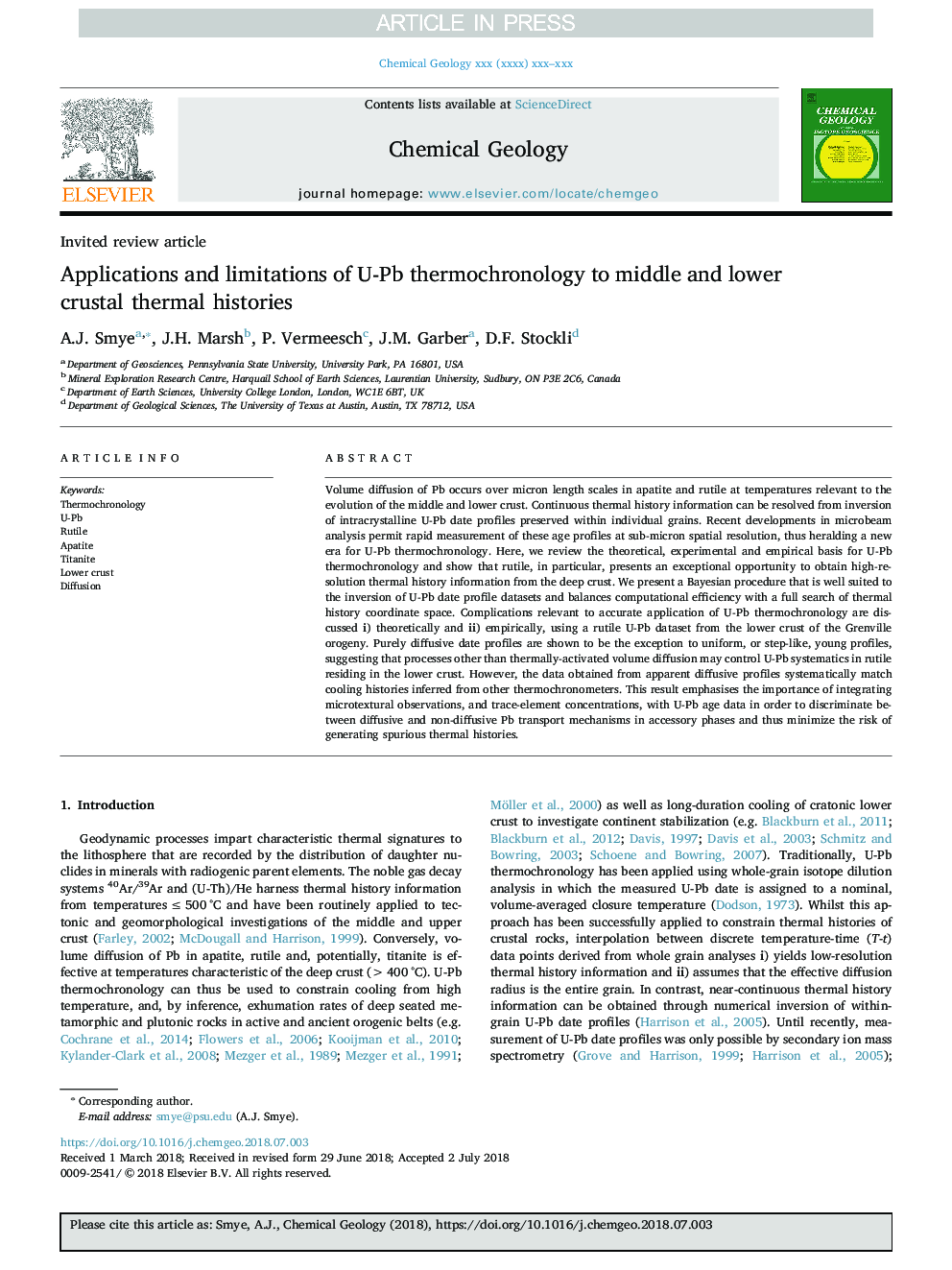| Article ID | Journal | Published Year | Pages | File Type |
|---|---|---|---|---|
| 8910113 | Chemical Geology | 2018 | 18 Pages |
Abstract
Volume diffusion of Pb occurs over micron length scales in apatite and rutile at temperatures relevant to the evolution of the middle and lower crust. Continuous thermal history information can be resolved from inversion of intracrystalline U-Pb date profiles preserved within individual grains. Recent developments in microbeam analysis permit rapid measurement of these age profiles at sub-micron spatial resolution, thus heralding a new era for U-Pb thermochronology. Here, we review the theoretical, experimental and empirical basis for U-Pb thermochronology and show that rutile, in particular, presents an exceptional opportunity to obtain high-resolution thermal history information from the deep crust. We present a Bayesian procedure that is well suited to the inversion of U-Pb date profile datasets and balances computational efficiency with a full search of thermal history coordinate space. Complications relevant to accurate application of U-Pb thermochronology are discussed i) theoretically and ii) empirically, using a rutile U-Pb dataset from the lower crust of the Grenville orogeny. Purely diffusive date profiles are shown to be the exception to uniform, or step-like, young profiles, suggesting that processes other than thermally-activated volume diffusion may control U-Pb systematics in rutile residing in the lower crust. However, the data obtained from apparent diffusive profiles systematically match cooling histories inferred from other thermochronometers. This result emphasises the importance of integrating microtextural observations, and trace-element concentrations, with U-Pb age data in order to discriminate between diffusive and non-diffusive Pb transport mechanisms in accessory phases and thus minimize the risk of generating spurious thermal histories.
Related Topics
Physical Sciences and Engineering
Earth and Planetary Sciences
Geochemistry and Petrology
Authors
A.J. Smye, J.H. Marsh, P. Vermeesch, J.M. Garber, D.F. Stockli,
